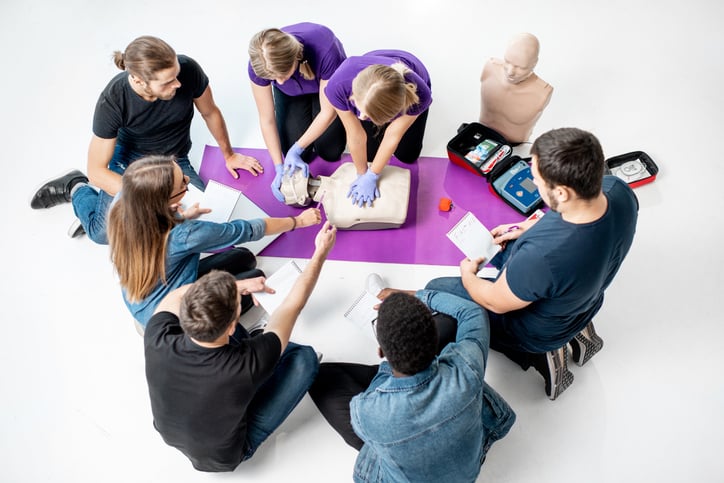
Drug overdoses, sudden injuries, respiratory issues, and myriad other health concerns can trigger cardiac arrest. Cardiac arrest is a leading cause of death, but many of these deaths are preventable. Every year, more than 383,000 cardiac arrests occur outside of hospitals. Bystanders providing CPR immediately can double or triple the chance of survival. The figure is even higher when trained first responders are prepared to perform CPR while managing the airway. Airway management is key to successful CPR, and first responders must have the right equipment ready to go.
Clearing the Airway
It’s CPR 101: Clear the airway before administering CPR. Cardiac arrest can occur for many reasons, including airway obstructions. Moreover, drug overdoses and a handful of other medical emergencies can cause vomiting that quickly leads to aspiration, further complicating cardiac arrest. The right suction machine can promptly clear the airway. If the patient is actively vomiting or bleeding into the airway, the SSCOR SDC Catheter™ (Formerly the SSCOR DuCanto Catheter®) is the ideal tool for protecting it.
Oxygenating the Patient
Bystanders performing CPR are instructed to perform mouth-to-mouth resuscitation. Although this strategy can work, oxygenating the patient is the gold standard in cardiac resuscitation. There are at least three reasons for this:
- Direct resuscitation means coming into contact with any infections the patient may have, as well as exposing an already vulnerable patient to infections from the rescuer.
- Oxygenation with a machine enables more control over the process, ensuring that the patient gets neither too little nor too much oxygen. This is especially important with neonates, who have much smaller lungs. A large breath of air may offer too much oxygen, doing significantly more harm than good.
- A team-based approach affords better monitoring and control. One team member can oxygenate the patient while the other performs chest compressions. This reduces distraction, making it easier to observe additional signs of distress.
Continued Airway Management
An initial cardiac crisis may predict a second one. Even after a patient is successfully resuscitated, it’s important to continue monitoring their airway. Most agencies opt to use mask ventilation when a patient is revived, and to continue oxygenating them during transport. You must also continue to monitor for other signs of airway impairment. A newly revived patient may begin vomiting or bleeding, increasing their risk of aspiration. So perform a comprehensive respiratory assessment, and have your equipment ready to go.
The Importance of the Right Equipment
Most cardiac arrests occur outside of hospital settings. The highest-quality wall-mounted suction will do nothing to help these patients. Even when cardiac arrests happen in hospitals, they may occur in waiting areas, exam rooms, or other areas where there is no wall-mounted suction. This is why it’s so important for every agency, including hospitals, to have portable emergency suction devices. A portable machine allows you to promptly tend to the patient without moving them, while meeting your treatment requirements under the Emergency Medical Treatment and Active Labor Act (EMTALA).
It’s not enough to invest in just any suction machine. You need portable suction that can deliver consistent, reliable suction. The right equipment ensures that you can tend treat patients of all ages, sizes, and health needs. For help selecting a portable emergency suction machine, download our free guide, The Ultimate Guide to Purchasing a Portable Emergency Suction Device.
Editor's Note: This blog was originally published in April 2020. It has been re-published with additional up-to-date content.















